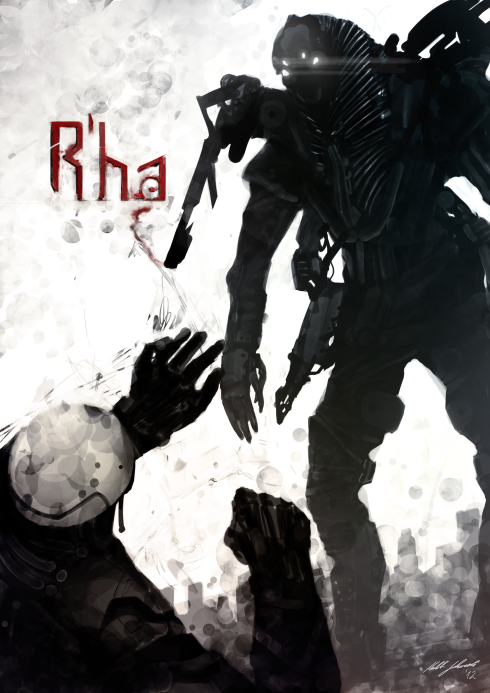Every once in a while a wunderkind director comes along who, with heaps of talent and bootstrapping, creates something with visual effects that seem to be straight out of Hollywood. The Purchase Brothers did it when they created their alien invasion short Half-Life: Escape from City 17 on a measly $500. Then came Fede Alvarez’s Panic Attack, a similarly destructive (and low budget) short in which giant robots eviscerate Montevideo. Now, 22-year-old German film student Kaleb Lechowski has attracted big-league attention with his riveting short R’ha.
The story of an alien race betrayed by its machine army in search of independence, R’ha centers on a single interrogation scene between an uprising computer and its sentient captive. Looking to break free of the limitations of their design–and carry out total elimination of their creators–the machines use some particularly nasty “motivation protocol” to extract key information from their prisoner.
As with many short films, R’ha feels like a snippet of a much larger story. Yet the details of the scene captivate us in their own right, thanks in large part to Lechwoski’s animation. The skin luminosity, musculature, and expressive twitches of the human-snakelike character are exceptional, particularly considering this is a no-budget student film created in seven months. And the film’s intriguing backstory and ambiguous ending beg for future installments.

Given the attention Lechowski attracted even before the film was released (he gained representation from Scott Glassgold and Raymond Brothers at IAM Entertainment based solely on the pre-release trailer) more from theR’ha world seems likely. Lechwoski is currently fleshing out a feature-length story to pitch to studios as a feature. As Glassgold says, “the plan is to use Kaleb’s model of low-cost (or in the case of the short, no-cost) special effects to create a sweeping low-budget science fiction universe.” It’s a plan that seems plausible given that Lechowski’s story world places animated creatures in the “good guy” role conventionally inhabited by costly human actors.
As Lechowski prepares to head to L.A. from Berlin, where he studied Digital Film Design at Mediadesign Hochschule, Co.Create asked him a few questions about the making of R’ha.

Co.Create: Tell us how this project started. What was the inspiration for the film?
Lechowski: We‘ve all seen movies showing highly intelligent aliens but often they are not well prepared for their wars against humanity. Or they seem as if they have not much control over their body with inaccurate movements. They are sticky and wet and naked. I wanted to create an alien race that’s really intelligent. They have a lot of machinery to keep casualties at a minimum. This concept about an alien race is something I have been considering/designing for a while now, and the interrogation sequence seemed like a good entry point for a short film.
The narrative seems like a glimpse of a larger story… did you flesh out more of the backstory in order to create this short film? And why are those computers so damn angry!?
Machines have a much higher contrast than organic beings. They can tolerate very low and very high temperatures. They can always be extended and more power can be added. They are capable of almost anything. Their only limit is their design, how they are created. They feel the aliens are limiting them by design, so they decide to eliminate them. This is their goal. And as machines they don’t need another goal for now, so they hunt them down.

When it comes to creature development, was there any inspiration for your main character?
It was meant to look somewhat beautiful or elegant. He has bright skin, an almost decorated neck that’s shaped like a pharaoh or a king cobra. Yet he is strong. I loved the way Caesar from Rise of the Planet of the Apesexpressed his emotion, so it inspired me a lot, as well.
What animation software did you use to create it?
Most things were done in Maya, like animation, rigging, shading, and rendering (Mental Ray). But I modeled almost everything in Blender because it is a lot faster for me, and I used zBrush to sculpt the alien and paint a lot of objects. Post-production was done in Nuke and After Effects.

Were there any parts of the animation that posed particular challenges?
It was quite an effort to make him receive electric shocks. I recorded myself cramping and tried to animate it that way. I ended up setting keyframes almost every two frames. Another big thing was the slow-motion jump. I recorded myself again to see the timing and, most important, the movement.
What does R’ha mean?
I really like the sound of Ra as an Egyptian god. It’s simple but sounds mighty.







